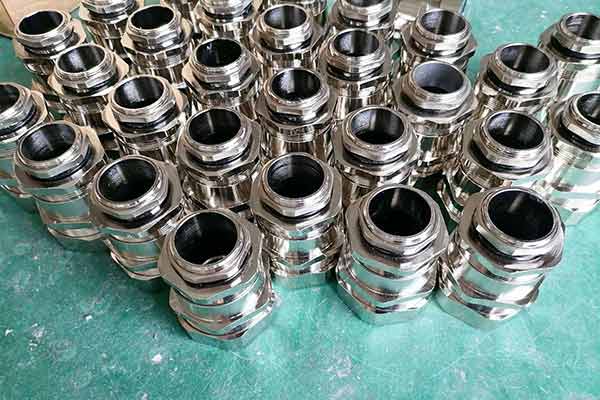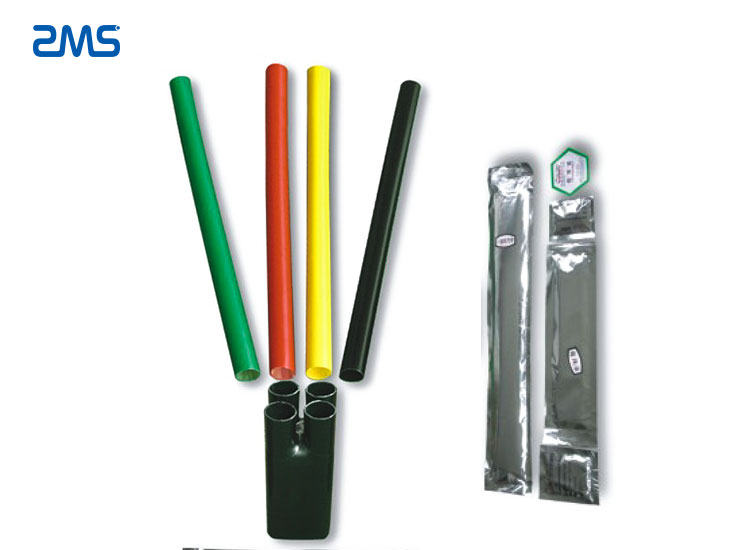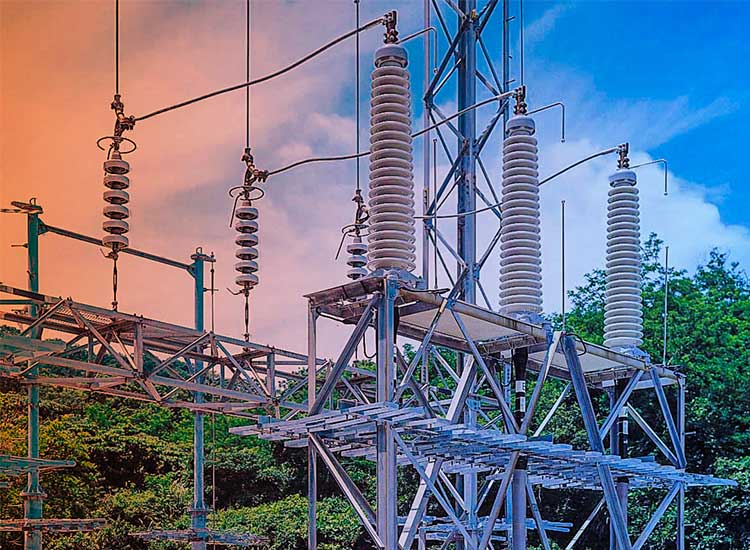Effective cable management and installation have become critical for ensuring seamless connectivity and performance in today’s rapidly evolving technological landscape. Whether in residential, commercial, or industrial settings, the demand for reliable and efficient cable installations is ever-increasing. This comprehensive guide explores various cable installation accessories, their applications, and the benefits they offer, ensuring you have all the information needed to make informed decisions for your cable management needs.

ZMS Introduction to Cable Installation Accessories
Cable installation accessories encompass a wide range of products designed to support, protect, and manage cables during and after installation. These accessories are essential for maintaining organization, reducing clutter, and ensuring the longevity and safety of the cabling infrastructure. From cable ties to conduit systems, each accessory plays a vital role in achieving a neat and efficient installation.
Key Cable Installation Accessories
1. Cable Ties
Cable ties, also known as zip ties, are one of the most common and versatile cable management tools. They are used to bundle and secure cables together, preventing tangling and providing a tidy appearance. Cable ties come in various sizes, materials, and colors, catering to different requirements and environments.
Applications:
Organizing cables in server rooms and data centers
Securing cables in automotive and aerospace industries
Bundling wires in home entertainment systems
Benefits:
Easy to use and install
Cost-effective
Available in reusable and heavy-duty options
2. Cable Trays
Cable trays are structural systems used to support and route cables. They provide a secure and organized pathway for cables, preventing them from sagging or getting damaged. Cable trays are available in different types, including ladder, perforated, and wire mesh trays.
Applications:
Supporting cables in commercial buildings
Routing cables in industrial facilities
Organizing cables in data centers
Benefits:
Facilitates easy cable installation and maintenance
Enhances airflow and reduces heat buildup
Provides flexibility for future cable additions or modifications
3. Conduits
Conduits are protective tubing systems used to enclose and protect cables from physical damage and environmental hazards. They are available in various materials such as PVC, metal, and flexible conduits, each suitable for different applications.
Applications:
Protecting electrical cables in residential and commercial buildings
Shielding cables in industrial environments
Routing cables in outdoor and underground installations
Benefits:
Provides robust protection against mechanical damage
Shields cables from moisture, chemicals, and other environmental factors
Facilitates easy cable replacement and upgrades
4. Cable Glands
Cable glands are devices used to secure and seal the ends of cables, providing strain relief and environmental protection. They are essential for ensuring the integrity and safety of cable connections, especially in harsh or hazardous environments.
Applications:
Securing cables in control panels and junction boxes
Protecting cables in marine and offshore installations
Ensuring safe connections in hazardous areas
Benefits:
Prevents cable pull-out and mechanical stress
Provides ingress protection against dust and moisture
Available in various materials and sizes for different applications

5. Cable Clamps
Cable clamps are used to secure and route cables along walls, ceilings, and other surfaces. They are available in different designs, including adhesive-backed and screw-mounted clamps, offering flexibility for various installation needs.
Applications:
Securing cables in residential wiring
Routing cables in automotive and aerospace applications
Organizing cables in industrial machinery
Benefits:
Easy to install and reposition
Provides a neat and organized appearance
Reduces cable strain and movement
6. Cable Markers
Cable markers are used to identify and label cables, making it easier to manage and troubleshoot cable installations. They come in various forms, including clip-on markers, heat-shrink labels, and adhesive labels.
Applications:
Labeling cables in data centers and server rooms
Identifying wires in electrical panels
Organizing cables in telecommunication networks
Benefits:
Simplifies cable identification and troubleshooting
Enhances safety by preventing incorrect connections
Available in different materials and colors for easy identification
7. Cable Ducts
Cable ducts, also known as cable raceways, are enclosed pathways used to route and protect cables. They are available in different shapes and sizes, including floor ducts, wall ducts, and ceiling ducts, catering to various installation requirements.
Applications:
Routing cables in office buildings and commercial spaces
Protecting cables in industrial environments
Organizing cables in residential wiring
Benefits:
Provides a clean and professional appearance
Protects cables from physical damage and interference
Facilitates easy cable management and maintenance
8. Heat Shrink Tubing
Heat shrink tubing is a versatile accessory used to insulate, protect, and provide strain relief to cables and connectors. When heated, the tubing shrinks to form a tight, protective covering around the cables.
Applications:
Insulating electrical connections
Protecting cables from abrasion and environmental factors
Providing strain relief in automotive and aerospace wiring
Benefits:
Provides excellent insulation and protection
Easy to apply and customize
Available in various sizes, colors, and materials

Choosing the Right Cable Installation Accessories
Selecting the appropriate cable installation accessories depends on several factors, including the type of cables, the installation environment, and the project’s specific requirements. Here are some key considerations to keep in mind:
1. Cable Type and Size
Different cables require different types of accessories for optimal installation and protection. Ensure that the accessories you choose are compatible with the type and size of cables you are working with.
2. Installation Environment
The environment in which the cables are installed plays a crucial role in determining the appropriate accessories. For example, outdoor installations may require weather-resistant accessories, while industrial environments may need accessories that can withstand harsh conditions.
3. Regulatory Compliance
Ensure that the cable installation accessories meet relevant industry standards and regulations. This is especially important for installations in critical applications such as healthcare, aviation, and telecommunications.
4. Future Scalability
Consider the potential for future expansion or modifications when selecting cable installation accessories. Choosing accessories that offer flexibility and scalability can save time and costs in the long run.
5. Aesthetic and Functional Requirements
In some installations, aesthetics, and functionality are equally important. For example, in office environments, cable management solutions that provide a clean and professional appearance are preferred.

Benefits of Using Cable Installation Accessories
The use of appropriate cable installation accessories offers numerous benefits, enhancing the overall performance, safety, and longevity of cable installations. Some of the key benefits include:
1. Enhanced Organization
Cable installation accessories such as cable ties, clamps, and ducts help maintain a neat and organized appearance, reducing clutter and making it easier to manage and troubleshoot cables.
2. Improved Safety
Accessories like cable glands, conduits, and heat shrink tubing provide essential protection against physical damage, moisture, and environmental hazards, ensuring the safety and reliability of cable installations.
3. Increased Durability
Using the right accessories can extend the lifespan of cables by protecting them from wear and tear, mechanical stress, and environmental factors. This reduces the need for frequent replacements and repairs.
1. Efficient Installation and Maintenance
Cable trays, ducts, and markers facilitate easy installation and maintenance, saving time and effort. Proper cable management also simplifies troubleshooting and reduces downtime.
1. Cost Savings
Investing in high-quality cable installation accessories can result in significant cost savings over time. Reduced maintenance, fewer replacements, and improved efficiency contribute to lower overall costs.
Cable installation accessories are indispensable for achieving efficient, safe, and organized cable management in various environments. From simple cable ties to advanced conduit systems, each accessory plays a crucial role in ensuring the integrity and performance of cable installations. By understanding the applications and benefits of these accessories, you can make informed decisions and enhance the quality and reliability of your cable management projects.
Whether you are a professional installer, a facility manager, or a DIY enthusiast, investing in the right cable installation accessories is key to achieving optimal results. Explore the wide range of accessories available and choose the ones that best meet your specific needs and requirements, ensuring a seamless and hassle-free cable installation experience.